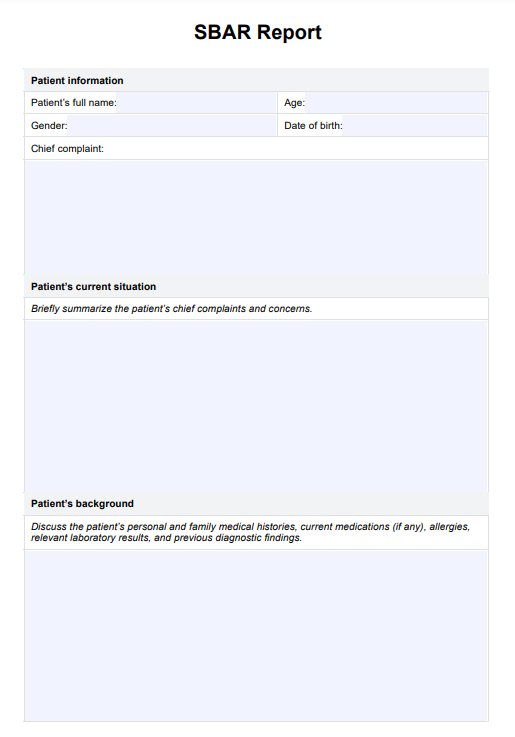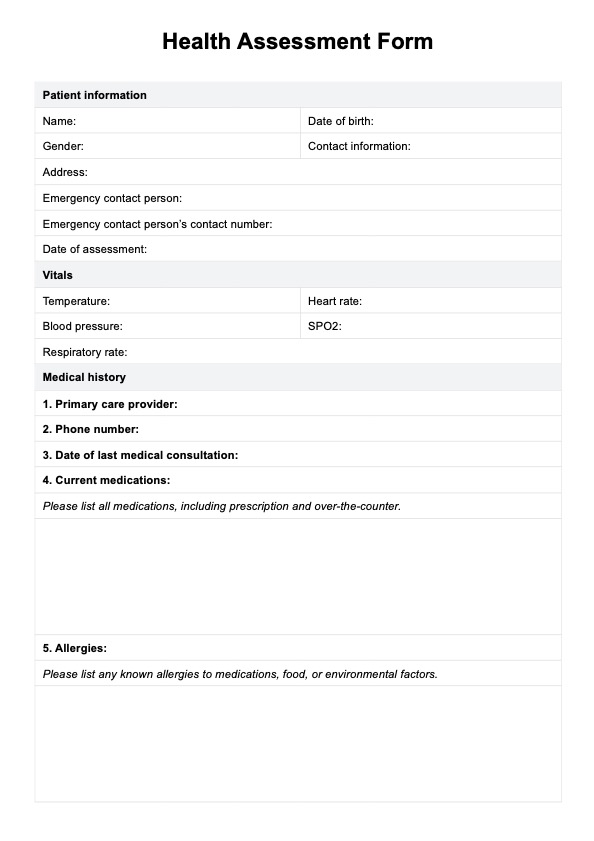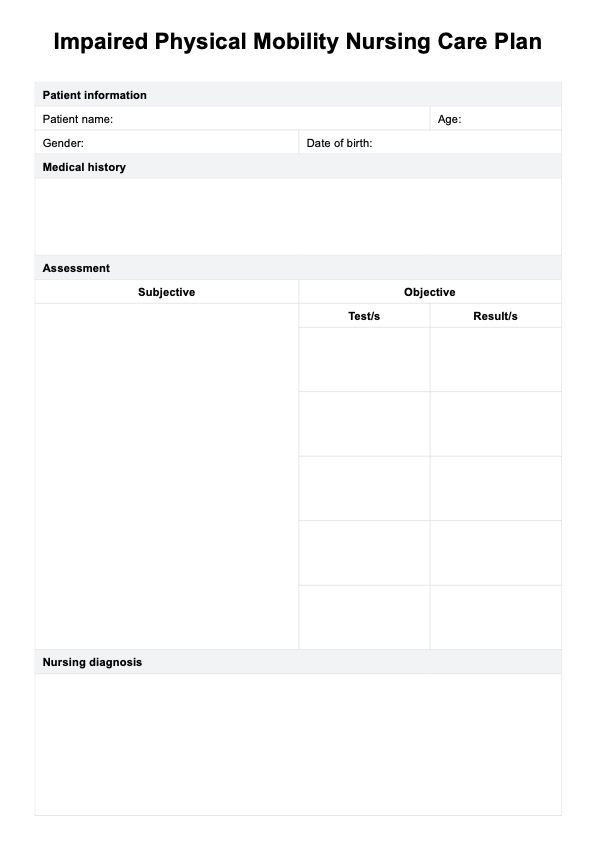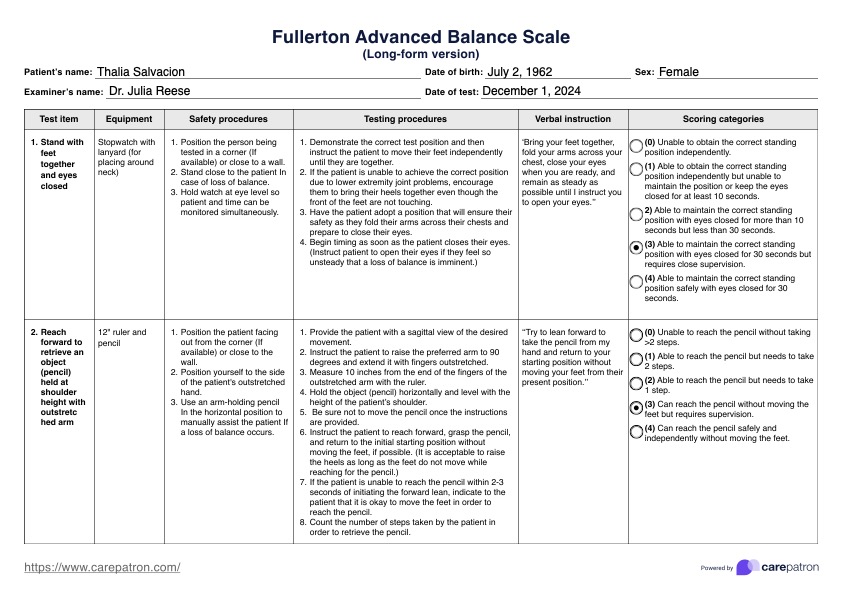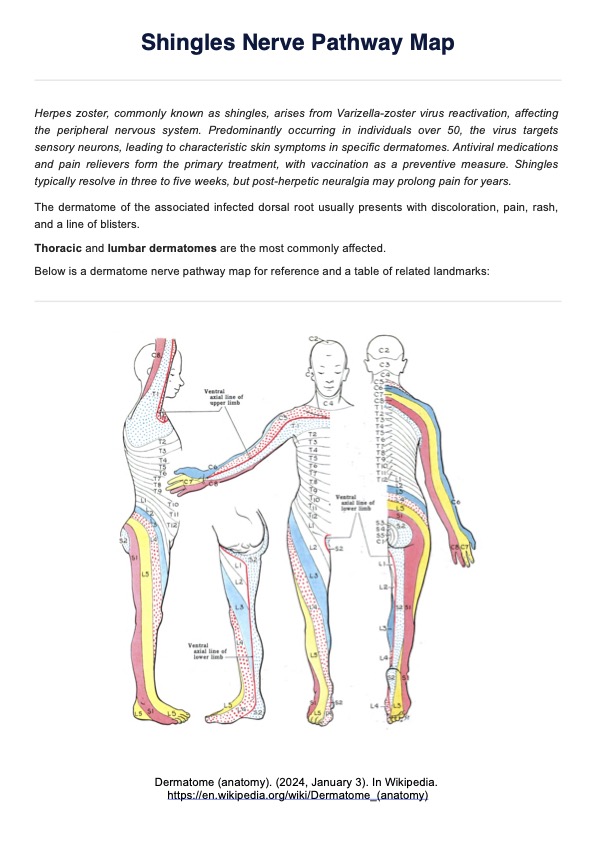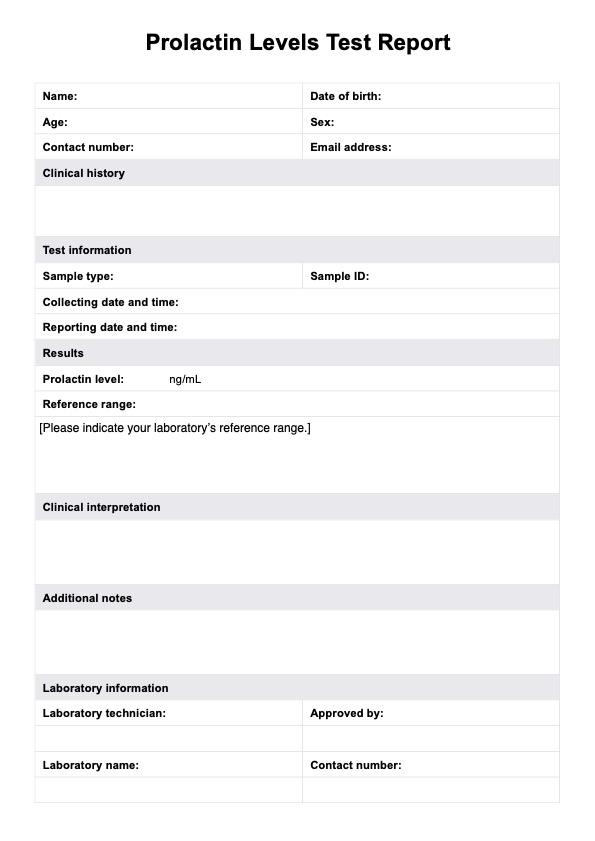Amylase Test
Get insights into your health with an Amylase Test. Understand pancreatic and salivary gland function with this diagnostic tool.


What is an Amylase Test?
The Amylase Test, also known as amylase blood test or serum amylase test, is a medical diagnostic procedure used to measure the amylase levels in a person's blood. Amylase is an enzyme primarily produced by the pancreas and salivary glands. It plays a crucial role in the digestion of carbohydrates, breaking down starches and sugars into smaller, more easily absorbed molecules.
The test involves drawing a blood sample from a patient and analyzing it in a laboratory. It is commonly ordered by healthcare providers to assess the health of the pancreas and diagnose various medical conditions. Here's why the Amylase Test is significant:
- Pancreatic Disorders: Elevated levels of amylase in the blood can indicate pancreatic diseases, such as pancreatitis (inflammation of the pancreas) or pancreatic cancer. In pancreatitis, the damaged pancreas often leaks amylase into the bloodstream.
- Salivary Gland Disorders: Certain conditions affecting the glands, like salivary duct obstruction or mumps, can also increase amylase levels.
- Monitoring Treatment: The Amylase Test can monitor treatment progress for pancreatitis or other amylase-related conditions. A decrease in amylase levels may indicate a positive response to treatment.
- Assessing Abdominal Pain: When a patient presents with abdominal pain, this test can help healthcare providers rule out or diagnose pancreatitis, which can cause such discomfort.
- Differential Diagnosis: It assists in distinguishing between different types of amylase, such as pancreatic amylase and salivary amylase, to pinpoint the source of the enzyme and determine the underlying condition.
Amylase Test Template
Amylase Test Example
How Does it Work?
The Amylase Test, a blood test used to measure amylase levels, involves several key steps:
Patient Preparation
Patients are typically asked to fast for 8-12 hours before the test. This ensures that recent meals do not influence the results.
Blood Sample Collection
A healthcare professional, often a phlebotomist, collects a blood sample from the patient's vein, usually from the arm.
Sample Handling
The blood sample is collected in a unique tube containing anticoagulants to prevent clotting. Proper handling is crucial to maintain the integrity of the sample.
Transport to Laboratory
The blood sample is labeled with the patient's information and transported to a laboratory for analysis.
Laboratory Analysis
The blood sample is centrifuged in the laboratory to separate the serum from the blood cells. The serum is then analyzed using an enzyme-linked immunosorbent assay (ELISA) or other methods to measure the amylase concentration.
Interpretation of Results
The laboratory technician or pathologist interprets the results. Elevated amylase levels may suggest pancreatic or salivary gland issues, while normal levels indicate a healthy state.
Report Generation
The results are compiled into a report and sent to the healthcare provider.
Clinical Assessment
The healthcare provider reviews the results in the context of the patient's medical history and symptoms to make a diagnosis or assess the patient's health.
Treatment and Follow-Up
The healthcare provider may recommend further tests or treatments depending on the results and diagnosis. For instance, if pancreatitis is suspected, the patient may need additional imaging studies.
When Would you use this Test?
The Amylase Test is employed in specific clinical scenarios and situations where its diagnostic capabilities are most relevant. Here's a closer look at when healthcare practitioners would use this test:
- Abdominal Pain: When a patient presents with severe abdominal pain, especially in the upper abdomen, healthcare providers may order an Amylase Test. This is particularly relevant when pancreatitis is suspected due to symptoms like persistent pain radiating to the back.
- Suspected Pancreatic Disorders: If a patient exhibits symptoms such as jaundice, unexplained weight loss, or chronic diarrhea, healthcare practitioners may use the Amylase Test to investigate potential pancreatic disorders, including pancreatic cancer.
- Acute Pancreatitis: In cases of acute pancreatitis, where patients experience sudden and severe abdominal pain, nausea, and vomiting, the Amylase Test is an essential diagnostic tool to confirm the condition and assess its severity.
- Trauma or Surgery: Surgeons and emergency medicine physicians may use this test when patients have suffered abdominal trauma or are undergoing pancreatic surgery to evaluate the extent of pancreatic injury or monitor post-surgical recovery.
- Monitoring Chronic Pancreatitis: Patients with chronic pancreatitis often require regular monitoring of their pancreatic function. The Amylase Test helps track disease progression and treatment effectiveness in such cases.
- Pediatric Conditions: Pediatricians may utilize the Amylase Test in children with symptoms like abdominal pain and vomiting, as it can indicate conditions like mumps or congenital pancreatic anomalies.
- Diabetes Management: For endocrinologists managing patients with diabetes complicated by underlying pancreatic issues, the Amylase Test can provide insights into the overall health of the pancreas and inform diabetes treatment strategies.
- Ongoing Cancer Care: Oncologists may order the Amylase Test to monitor pancreatic cancer patients during their treatment journey to assess disease progression and the effectiveness of therapeutic interventions.
What do the Results Mean?
The interpretation of Amylase Test results can provide valuable insights into a patient's health, particularly regarding the function of the pancreas and salivary glands. Here are common Amylase Test results and their meanings:
- Normal Range: Amylase levels falling within the reference range, typically around 30 - 110 U/L (values may vary slightly between laboratories), are considered normal. This suggests that the pancreas and salivary glands are functioning correctly. No immediate concerns related to these organs are indicated.
- Elevated Amylase Levels: Elevated amylase levels in the blood, often above 110 U/L, can signify various medical conditions, the most common being acute pancreatitis. This condition occurs when the pancreas inflames, causing amylase to leak into the bloodstream. Other potential causes of elevated amylase levels include chronic pancreatitis, pancreatic cancer, salivary gland disorders (e.g., mumps), and pancreatic duct obstruction.
- Decreased Amylase Levels: In rare cases, amylase levels may be lower than normal. This can occur in conditions where the pancreas is severely damaged or if there is a lack of amylase production due to pancreatic insufficiency. It may also be seen in conditions where protein malnutrition is a factor.
It's important to note that while amylase levels can provide valuable diagnostic information, a single test result should be interpreted in the context of the patient's overall clinical presentation, medical history, and other diagnostic tests. Additionally, Amylase Test results may vary slightly between different laboratories due to differences in reference ranges and testing methods.
Research & Evidence
The Amylase Test is a medical diagnostic tool with a long medical development and usage history. Initially introduced in the early 20th century, the test was primarily used to evaluate pancreatic function. The primary objective was to diagnose and monitor pancreatitis, a pancreas inflammation.
Over the years, the Amylase Test has undergone significant advancements in laboratory techniques, making it more reliable and accurate. Developing automated analyzers and standardized testing procedures further improved its clinical utility.
The test has been extensively researched, with several clinical studies supporting its usefulness. It has been instrumental in diagnosing various pancreatic and salivary gland disorders. One of the most significant research areas has been managing acute pancreatitis. Research has established a correlation between elevated amylase levels and pancreatitis.
The Amylase Test has also helped differentiate between pancreatic and non-pancreatic causes of abdominal pain, making it crucial for appropriate patient management. Furthermore, the test has been utilized in cancer research, particularly in diagnosing pancreatic cancer, where elevated levels may suggest the presence of the disease.
Ongoing research continues to refine the understanding of amylase levels in various clinical contexts, contributing to its use as a diagnostic and monitoring tool. The Amylase Test has come a long way since its inception and has proved essential in diagnosing and monitoring various medical conditions. Its continued research and development will undoubtedly lead to more significant advancements in medical science.
References
- HealthLink BC. (2023, August 4). Amylase Test. Retrieved from https://www.healthlinkbc.ca/tests-treatments-medications/medical-tests/amylase
- Mount Sinai Health System. Amylase (Blood) - Health Encyclopedia. Retrieved from https://www.mountsinai.org/health-library/tests/amylase-blood
- Lab Tests Online. Amylase Test. Retrieved from https://labtestsonline.org.uk/tests/amylase-test
- Testing.com. Amylase (Blood). Retrieved from https://www.testing.com/tests/amylase/
- Medical News Today. (2023, August 4). Amylase Test. Retrieved from https://www.medicalnewstoday.com/articles/324521
- WebMD. (2023, August 4). What Is an Amylase Test? Retrieved from https://www.webmd.com/a-to-z-guides/what-is-an-amylase-test
- University of Rochester Medical Center. Amylase (Blood). Retrieved from https://www.urmc.rochester.edu/encyclopedia/content.aspx?contenttypeid=167&contentid=amylase_blood
- Cleveland Clinic. (2023, August 4). Amylase (Blood) Test. Retrieved from https://my.clevelandclinic.org/health/diagnostics/22386-amylase-test
- MedlinePlus. (2023, August 4). Amylase Test. Retrieved from https://medlineplus.gov/lab-tests/amylase-test/
Commonly asked questions
Healthcare providers, including doctors, gastroenterologists, surgeons, and emergency room physicians, typically request an Amylase Test.
Amylase Tests are used when there are symptoms or clinical indications of pancreatic or salivary gland disorders, such as abdominal pain, pancreatitis, or suspected pancreatic cancer.
Amylase Tests involve drawing a blood sample from the patient, which is then analyzed in a laboratory to measure amylase levels. The results help diagnose and monitor conditions related to the pancreas and salivary glands.
The actual blood draw for an Amylase Test is relatively quick, typically taking a few minutes. However, the total time to receive results can vary depending on the laboratory's processing time, but it usually ranges from a few hours to a day or two.
�?�


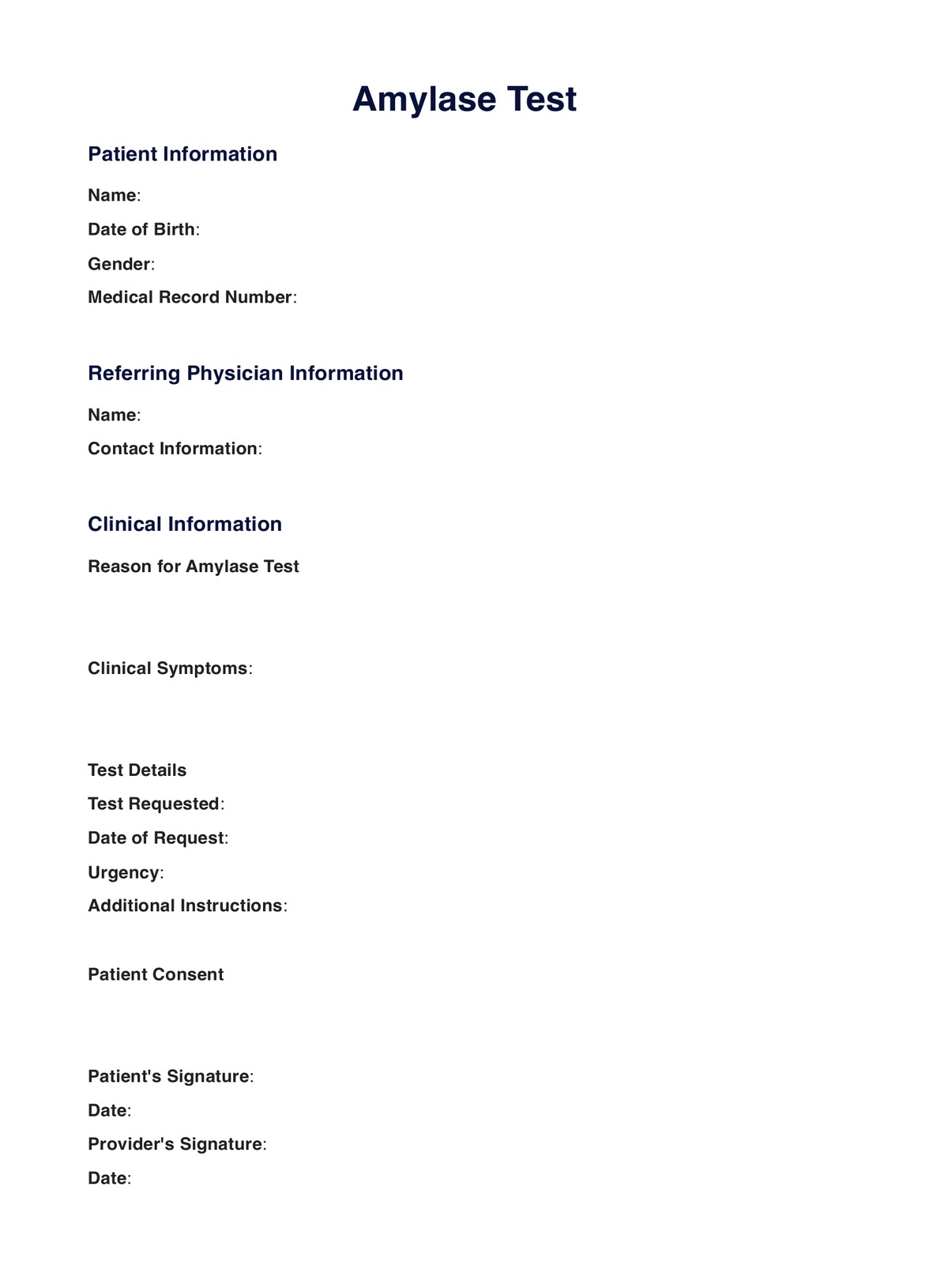
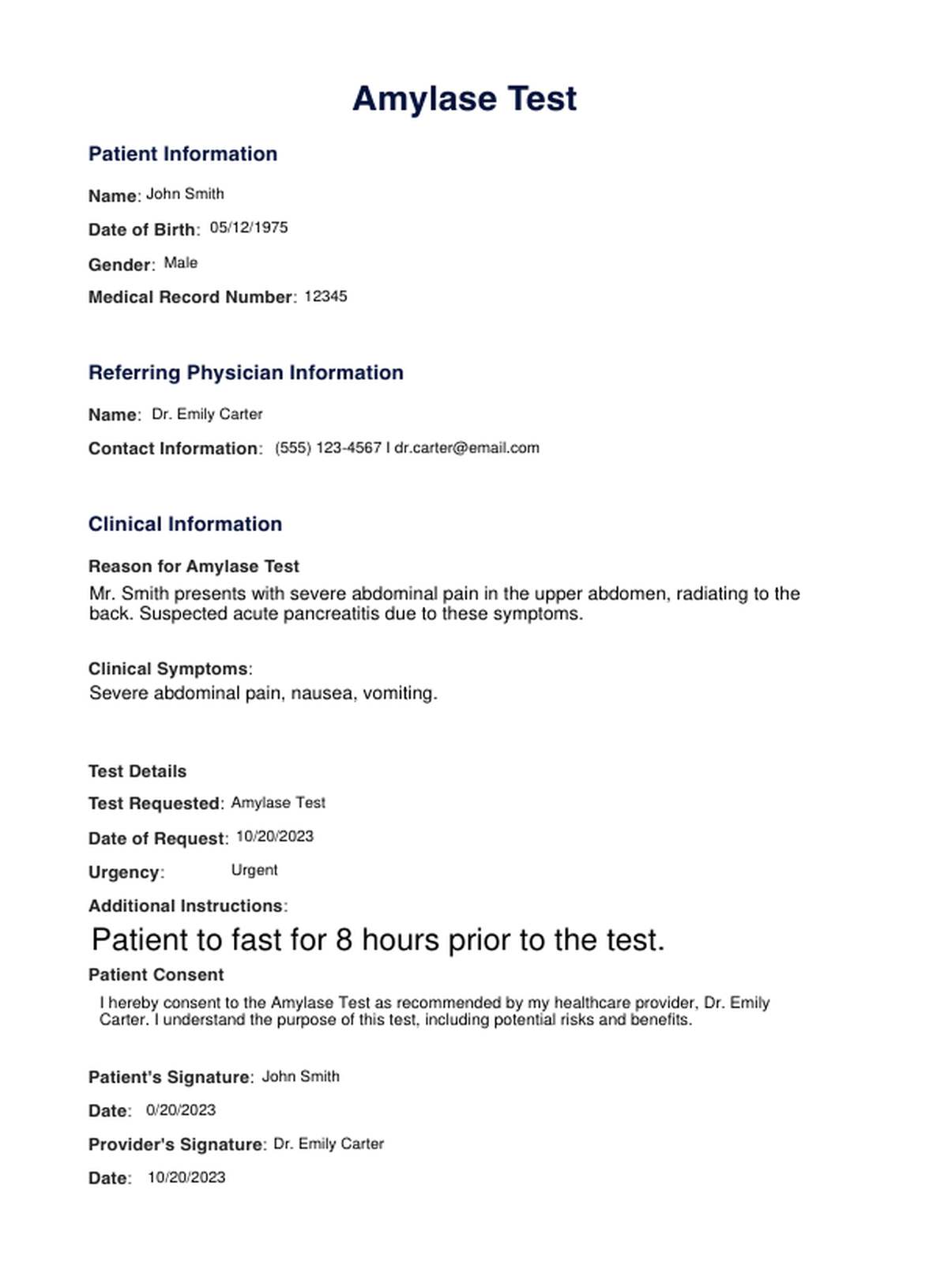


















-template.jpg)

















































































